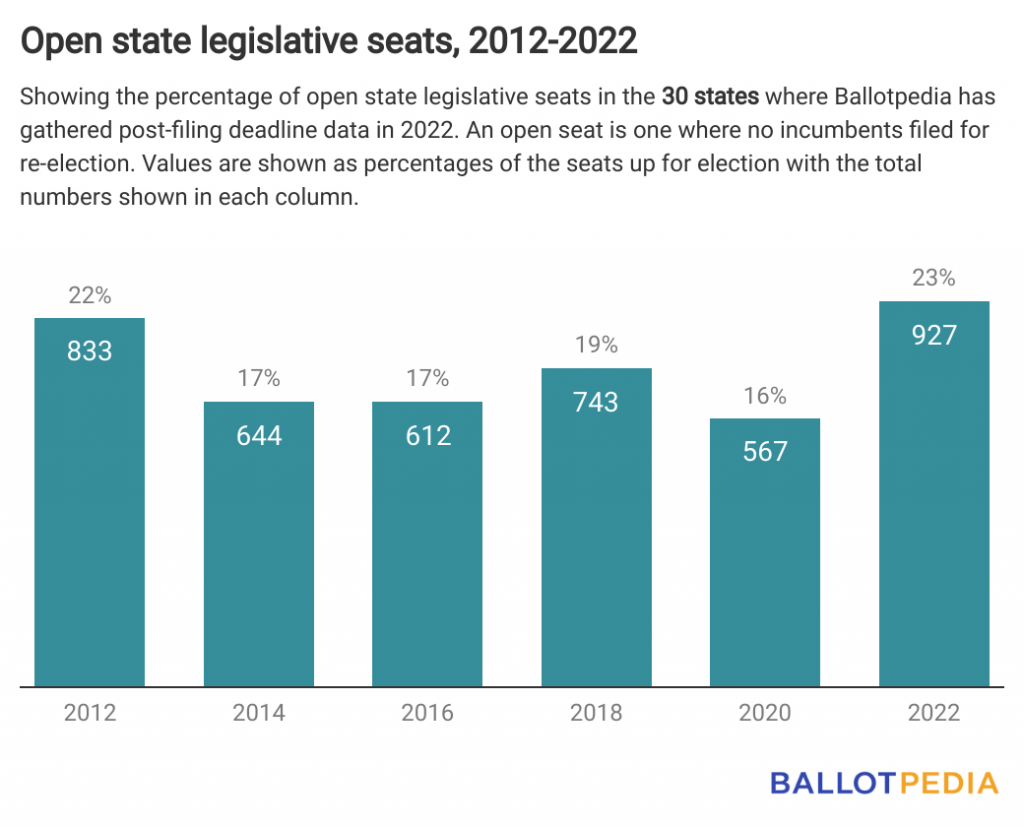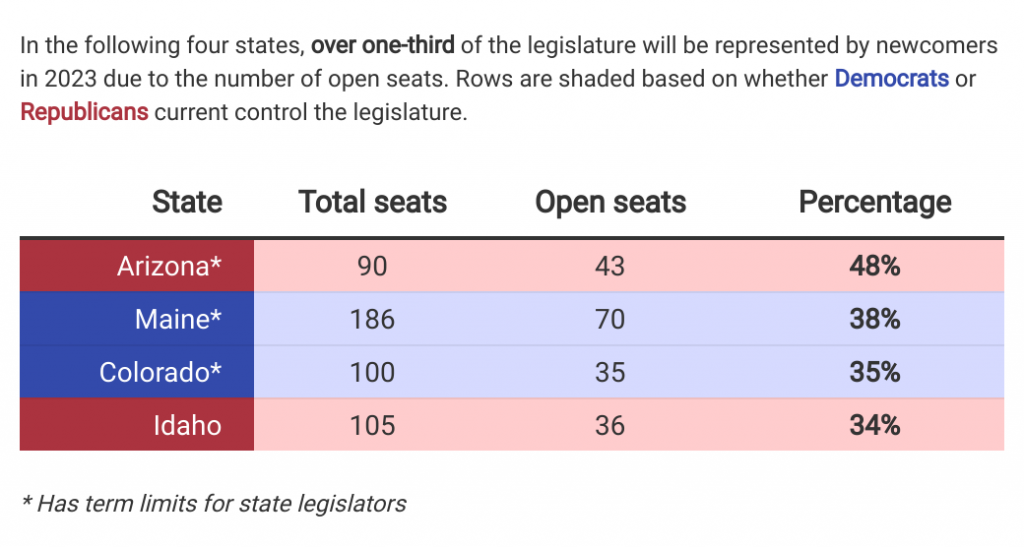A decade-high 23% of state legislative seats up for election this year are open, meaning no incumbents filed to run. This is based on an analysis of 30 states where Ballotpedia has collected post-filing deadline data in 2022.
Open seats typically occur when an incumbent leaves office. In post-redistricting years, it is also common to see open seats when incumbents are drawn into other districts, leaving their old districts open. Across these 30 states, the next-closest rate of open seats came in the last post-redistricting cycle, 2012, with 22% of those seats without incumbents.

Open seats can alter the makeup of state legislatures both in terms of politics and personality. Since no incumbents are present, newcomers to the chamber are guaranteed to win these seats. The number of newcomers can also increase if incumbents lose in primaries or general elections.
There are four states—Arizona, Colorado, Maine, and Idaho—where over one-third of the state legislature will be represented by newcomers based solely on the number of open seats.
Of these four, Arizona, Colorado, and Maine all have term limit laws, which can force incumbents to leave office after serving a maximum number of years. Maine had the largest number of term-limited incumbents in this group with 46, followed by Colorado with 14, and Arizona with nine.

In three states—Utah, Indiana, and South Carolina—less than 10% of the state legislature is guaranteed to newcomers based on open seats. None of these three states have term limit laws.

Additional reading:
Learn More






